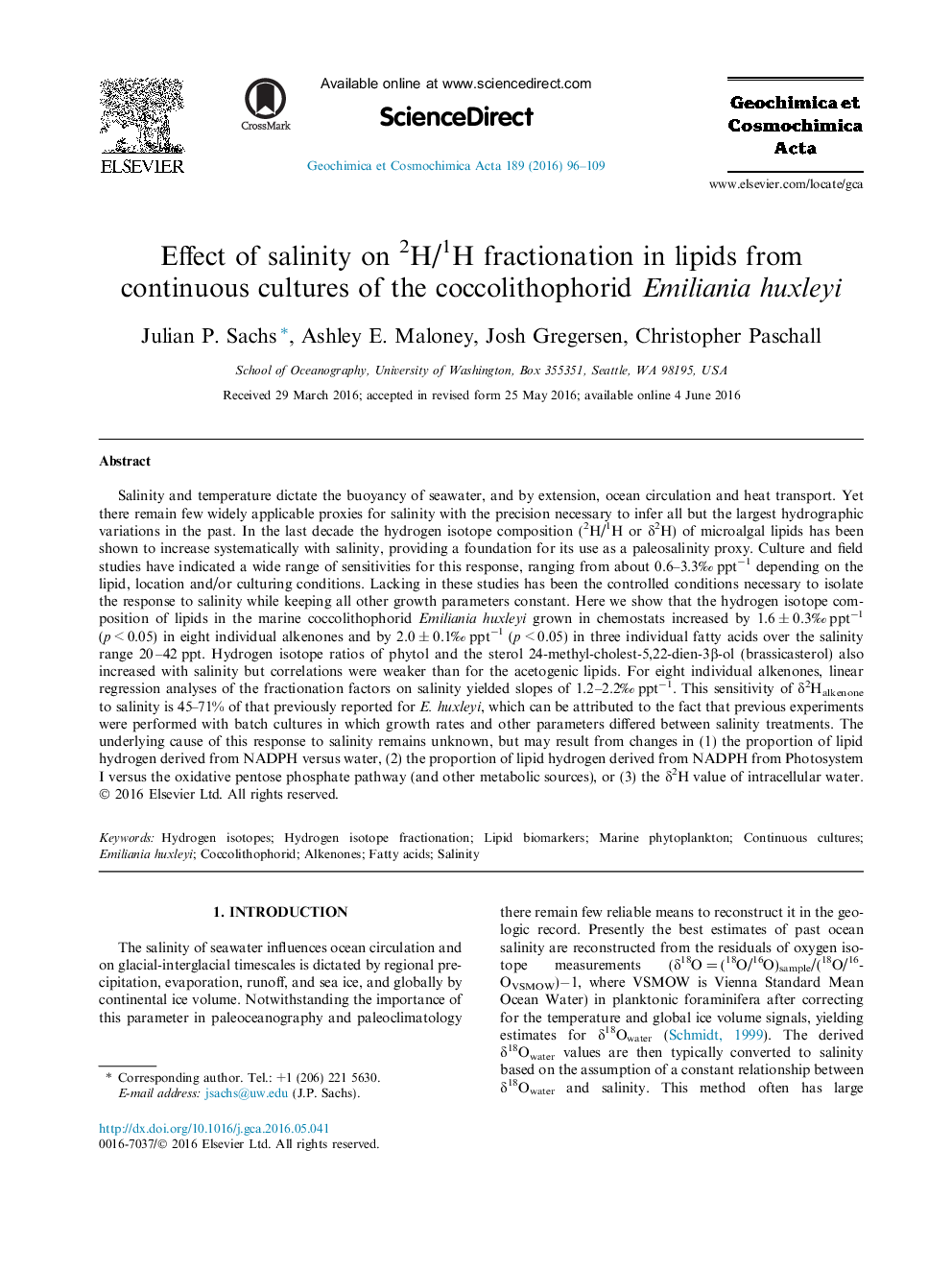| کد مقاله | کد نشریه | سال انتشار | مقاله انگلیسی | نسخه تمام متن |
|---|---|---|---|---|
| 6437245 | 1637968 | 2016 | 14 صفحه PDF | دانلود رایگان |

Salinity and temperature dictate the buoyancy of seawater, and by extension, ocean circulation and heat transport. Yet there remain few widely applicable proxies for salinity with the precision necessary to infer all but the largest hydrographic variations in the past. In the last decade the hydrogen isotope composition (2H/1H or δ2H) of microalgal lipids has been shown to increase systematically with salinity, providing a foundation for its use as a paleosalinity proxy. Culture and field studies have indicated a wide range of sensitivities for this response, ranging from about 0.6-3.3â°Â pptâ1 depending on the lipid, location and/or culturing conditions. Lacking in these studies has been the controlled conditions necessary to isolate the response to salinity while keeping all other growth parameters constant. Here we show that the hydrogen isotope composition of lipids in the marine coccolithophorid Emiliania huxleyi grown in chemostats increased by 1.6 ± 0.3â°Â pptâ1 (p < 0.05) in eight individual alkenones and by 2.0 ± 0.1â°Â pptâ1 (p < 0.05) in three individual fatty acids over the salinity range 20-42 ppt. Hydrogen isotope ratios of phytol and the sterol 24-methyl-cholest-5,22-dien-3β-ol (brassicasterol) also increased with salinity but correlations were weaker than for the acetogenic lipids. For eight individual alkenones, linear regression analyses of the fractionation factors on salinity yielded slopes of 1.2-2.2â°Â pptâ1. This sensitivity of δ2Halkenone to salinity is 45-71% of that previously reported for E. huxleyi, which can be attributed to the fact that previous experiments were performed with batch cultures in which growth rates and other parameters differed between salinity treatments. The underlying cause of this response to salinity remains unknown, but may result from changes in (1) the proportion of lipid hydrogen derived from NADPH versus water, (2) the proportion of lipid hydrogen derived from NADPH from Photosystem I versus the oxidative pentose phosphate pathway (and other metabolic sources), or (3) the δ2H value of intracellular water.
Journal: Geochimica et Cosmochimica Acta - Volume 189, 15 September 2016, Pages 96-109